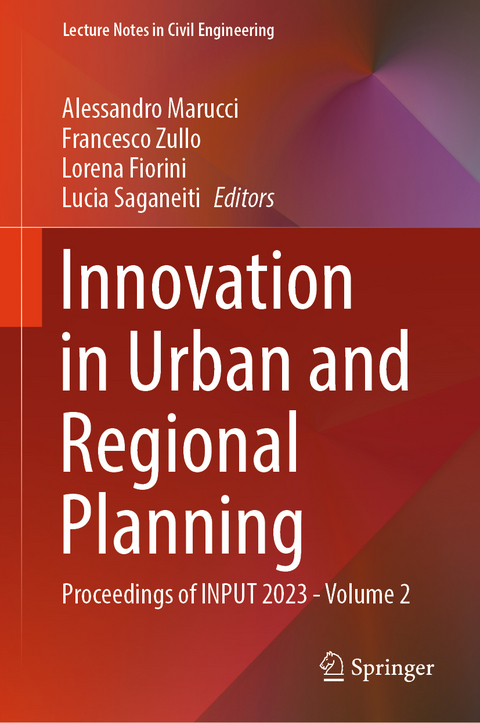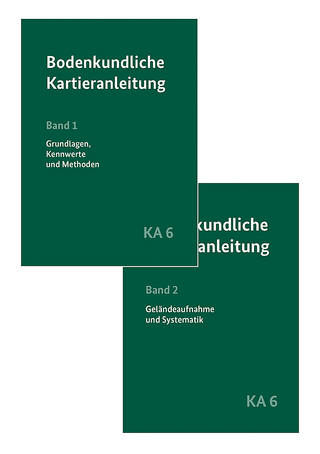
Innovation in Urban and Regional Planning
Springer International Publishing (Verlag)
978-3-031-54095-0 (ISBN)
This book gathers the proceedings of the INPUT2023 Conference on 'Innovation in Urban and Regional Planning.' The 12th International Conference INPUT was held at the University of L'Aquila, Italy, on September 6-8, 2023, and brought together international scholars in the fields of planning, civil engineering and architecture, ecology, and social science, to strengthen the knowledge on nature-based solutions and to enhance the implementation and replication of these solutions in different contexts. The book represents the state of the art of modeling and computational approaches to innovations in urban and regional planning, with a transdisciplinary and borderless character to address the complexity of contemporary socio-ecological systems and following a practice-oriented and problem-solving approach. Computational tools, technologies, data, mathematical models, and decision support tools are explored for providing innovative spatial planningmodeling methodologies.
Part I: Resilient, Circular and Sustainable Cities Settlement Network Supplying Energy.- Industrial symbiosis and circular urban practices.- The process of metropolisation and Spatial Accessibility. The case study of the Cagliari Metropolitan City.- A participatory mapping for planning a circular city.- Part II: Integrating Ecosystem Services into Spatial Planning Processes: Sustainable Solutions for Healthier and Safer Urban and Rural Environments.- Landscape planning and fragmentation: a method for classifying rural landscapes.- Nature-based solutions and city planning: A study related to the preliminary Masterplan of Cagliari, Italy.- Green Infrastructure and Grey Infrastructure. Rehabilitation of disused infrastructure assets as an opportunity for green development for cities.- SEEA and ecosystem services accounting: a promising framework for territorial governance innovation.- Assessing ecosystem services provided by nature-based solutions alongside different urban morphologies.-Territorial regeneration between sustainable land use and the enhancement of Ecosystem Services.- Green Infrastructure and ecosystem services to guide the revision process of Land-use Plan. A methodological framework.- The integration of sustainable development principles within spatial planning practices.- The role of the Agendas for Sustainable Development in designing the metropolitan sustainable infrastructure. The case of the Metropolitan city of Cagliari.- The regionalization of Ecosystem Services to support sustainable planning: the case study of the province of Potenza.- Part III: Supporting the transition towards ecologically-oriented urban planning: what's the role of early-career researchers? Innovative findings, experiences, and ways forward.- Protected areas: from biodiversity conservation to the social-ecological dimension.- Part IV: Towards denser and greener cities? Methods and indicators to monitor trends and impacts in support of urban planning and policies.- Steeringnet zero land take urban growth. A decision support method applied to the city of Castelfranco Emilia, Italy.- Spatiotemporal dynamics of urban growth and greening goals towards sustainable development.- Performance-based site selection of Nature-based solutions: Applying the curve number model to high-resolution layers to steer better greening strategies.- Urban Ecosystem Services: land cover and potential of urban soils.- Denser and greener cities, but how? A combined analysis of population and vegetation dynamics in Berlin.- Identifying accessibility gaps to urban functions and services - Examples of Italian medium-sized cities.- Part V: Innovative Approaches and Methodologies for driving Sustainable and Inclusive Urban Regeneration.- Using the GIS to Assess Urban Resilience with Case Study Experience.- Map4Accessibility project, an inclusive and participated planning of accessible cities: overview and first results.- Universities, cities and sustainability.- Urban regeneration andarchitectural quality in inner areas of the Italian Apennines. Indicators and models for projects and planning.- Using decision aiding software for a project-oriented planning: the urban Agenda for Sustainable Development of the Metropolitan city of Cagliari.- Children-oriented urban regeneration: an inclusive co-design approach for the Italian recovery processes.- Is Rome (Italy) undergoing passive ecological gentrification processes?.- Advanced technological approach for risk mitigation and land protection: the SICURA Project.- The innovative management of community space as a key strategy to guide urban regeneration programs: the experience of the Neighbourhood-Hub Project.- Decision-support Tools for Territorial Regeneration: a GIS-based multi-criteria evaluation utilizing the Territorial Capital Framework.- Public space-led urban regeneration. The identity and functional role of Rocco Petrone Square.- Part VI: The Innovation of Urban Planning Tools for Energy-Resilient Cities.- Utilizing Spatial Multi-Criteria Analysis to determine optimal sites for Green Hydrogen Infrastructure deployment.- Energy-Saving and Urban Planning: an Application of Integrated Spatial and Statistical Analyses to Naples.- Urban energy resilience and strategic urban planning in Emilia-Romagna: evidence from three cities.- Renewable energy communities in urban areas: determining key characteristics from an analysis of European case studies.- Promoting engagement and inclusion: a case study on an Energy Community in Cagliari, Italy.- Part VII: Smart Happy Region. Relationship between Planning and Subjective Well-Being.- Identifying the features of a walkable-oriented redevelopment of brownfields: a systematic review.- Well-being cities and territorial government tools: relationships and interdependencies.- A Preliminary Survey on Happy-Based Urban and mobility Strategies: Evaluation of European Best Practices.- Spatial Smartness and (In)Justice in Urban Contexts? The Case studies of Cagliari and Parma, Italy.- Obesity and its relationship with urban pattern in italian regions.- Factors Affecting the Evolution of Sustainable Mobility in Smarter, Happier Cities.- Participation for everyone: young people's involvement in the shift towards happier and more resilient cities.- Territorial imbalances in the post-pandemic context: a focus on digital divide in Italy's inner areas.- Part VIII: Climate sensitive planning: re-defining urban environments for sustainable cities.- BIM as a tool for urban ecosystems control.- Adapting to Change: Understanding Mediterranean Archetypes as Resistance Strategies.- Climate driven hydrological performance of Nature-based solutions: an empirical assessment of a blue-green roof.- The engagement of small European municipalities in achieving the climate neutrality.- Climate Changes and Protected Areas. Towards an integrated management.- Urban coastal landscape. The fragile buffer areas of Bacoli, Palermo and Termoli to switch the decay into development.- A methodological approach to improve the definition of Local Climate Zones in complex morphological contexts. Application to the case study of Naples metropolitan area.- Intervention strategies for urban climate control: Integration of nature based solutions in the historical-heritage neighborhood "el Almendral" of Valparaíso.- Part IX: Urban and peri-urban areas: building knowledge and mapping to better plan the sustainable green city.- Group Model Building to assess local knowledge of Nature Based Solution implementation.- Mapping Relations Transformation of Urban and Natural Landscape in Adriatic Cities Fostering Landscape Sustainability and Promoting Landscape Quality as Spatial Planning Objectives.- Characterization of urban and peri-urban areas in Umbria Region to identify their possible role in the conservation of Natura 2000 Network.- Preliminary study towards the integration of Brazil's linear parks into urban sustainable mobility system.- Part X: Densification andurban regeneration for climate adaptation in sustainable settlements.- Natural cities and new Italian urban regions. The role of medium-sized urban areas in Italy.- Limit land take. A matter of thresholds?.- Recuperate the existing. Technical devices a réaction poétique.- Advanced Planning Tool Mosaic (A-PTM) decision support tool towards the sustainable development goals.
| Erscheinungsdatum | 28.02.2024 |
|---|---|
| Reihe/Serie | Lecture Notes in Civil Engineering |
| Zusatzinfo | XXXVI, 731 p. 235 illus., 212 illus. in color. |
| Verlagsort | Cham |
| Sprache | englisch |
| Maße | 155 x 235 mm |
| Themenwelt | Naturwissenschaften ► Geowissenschaften ► Geografie / Kartografie |
| Schlagworte | cultural heritage • Environmental sustainability • Input • Rural landscapes • Socio-ecological Systems • spatial decision-making • spatial planning • urban planning • Urban Science |
| ISBN-10 | 3-031-54095-6 / 3031540956 |
| ISBN-13 | 978-3-031-54095-0 / 9783031540950 |
| Zustand | Neuware |
| Haben Sie eine Frage zum Produkt? |
aus dem Bereich


